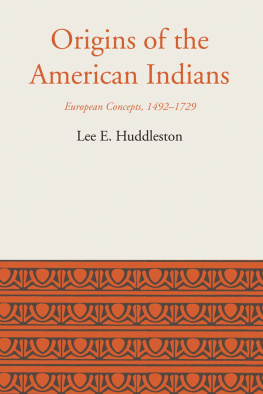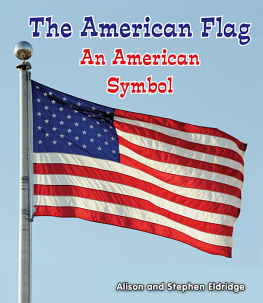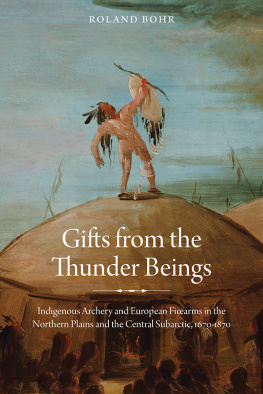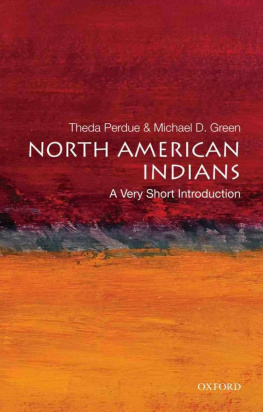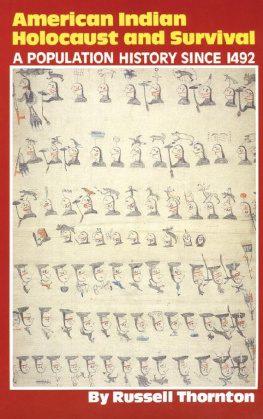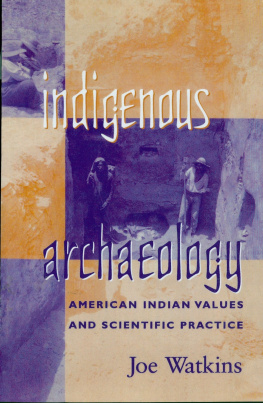Lee Eldridge Huddleston - Origins of the American Indians: European Concepts, 1492-1729
Here you can read online Lee Eldridge Huddleston - Origins of the American Indians: European Concepts, 1492-1729 full text of the book (entire story) in english for free. Download pdf and epub, get meaning, cover and reviews about this ebook. year: 2015, publisher: University of Texas Press, genre: Art. Description of the work, (preface) as well as reviews are available. Best literature library LitArk.com created for fans of good reading and offers a wide selection of genres:
Romance novel
Science fiction
Adventure
Detective
Science
History
Home and family
Prose
Art
Politics
Computer
Non-fiction
Religion
Business
Children
Humor
Choose a favorite category and find really read worthwhile books. Enjoy immersion in the world of imagination, feel the emotions of the characters or learn something new for yourself, make an fascinating discovery.
- Book:Origins of the American Indians: European Concepts, 1492-1729
- Author:
- Publisher:University of Texas Press
- Genre:
- Year:2015
- Rating:5 / 5
- Favourites:Add to favourites
- Your mark:
- 100
- 1
- 2
- 3
- 4
- 5
Origins of the American Indians: European Concepts, 1492-1729: summary, description and annotation
We offer to read an annotation, description, summary or preface (depends on what the author of the book "Origins of the American Indians: European Concepts, 1492-1729" wrote himself). If you haven't found the necessary information about the book — write in the comments, we will try to find it.
An examination of early European theories about the origin of American indigenous peoples.
Origins of the American Indians: European Concepts, 1492-1729 — read online for free the complete book (whole text) full work
Below is the text of the book, divided by pages. System saving the place of the last page read, allows you to conveniently read the book "Origins of the American Indians: European Concepts, 1492-1729" online for free, without having to search again every time where you left off. Put a bookmark, and you can go to the page where you finished reading at any time.
Font size:
Interval:
Bookmark:
LATIN AMERICAN MONOGRAPHS, NO. 11
INSTITUTE OF LATIN AMERICAN STUDIES
THE UNIVERSITY OF TEXAS
ORIGINS OF THE AMERICAN INDIANS
European Concepts, 14921729
By Lee Eldridge Huddleston
PUBLISHED FOR THE INSTITUTE OF LATIN AMERICAN STUDIES
BY THE UNIVERSITY OF TEXAS PRESS, AUSTIN
Library of Congress Catalog Card No. 6765582
Copyright 1967 by Lee Eldridge Huddleston
All rights reserved
ISBN 978-1-4773-0613-0 (library e-book)
ISBN 9781477306130 (individual e-book)
doi: 10.7560/736931
PREFACE
This study grew out of a long-standing interest in the antiquity of man in America and a curiosity about the attitudes of the earliest Europeans in America concerning the problem of the origin of man in the New World. Because of the unitary traditions of the Christian church with respect to human origins, the Europeans automatically assumed that the American Indians derived from some Old World group. But certain questions remained: How did the natives get to the New World? When did they arrive? Did they bring their civilizations with them or develop them after their arrival? From what known group of people were they descended?
When I attempted to trace these points through the modern literature, I discovered that few writers showed a knowledge of, or any great interest in, the opinions of the men who wrote on this subject in the first two centuries of the European experience in America. The most frequently-quoted works dealing with the history of the opinions concerning the origins and antiquity of man in America (Winsor, 1889; Bancroft, 1886; Imbelloni, 1956) devoted only a few brief paragraphs to the sixteenth and seventeenth centuries. All the writers on this subject knew of the controversy between Hugo Grotius and Joannes de Laet in 16431644 (largely because of the reputation of Grotius), but none revealed any understanding of the intellectual or historiographical framework within which this controversy took place.
In addition to the Grotius-De Laet affair most modern writers knew of Gregorio Garcas Origen de los indios published in 1607, but few had actually used the book. Those authors who did refer to Garca used the 1729 edition which had been considerably expanded by Andres Barcia. I was struck by the fact that several authors who used Garca credited him with opinions inconsistent with other opinions attributed to him, and none of them matched my own reading of Garca. In a similar fashion other historiographical landmarks in the discussion of the origins of the Indians seemed either incorrectly or irrelevantly presented in the standard accounts.
My original intention was to investigate the literature of the sixteenth and seventeenth centuries to discover what were the opinions of Europeans of that period, how those opinions were derived, and how they changed. In the light of this investigation I have distinguished two rival, but not mutually exclusive, traditions in the origin literature. The Acostan Tradition, characterized by a moderate skepticism with respect to the comparative and exegetical methodology of the day, by an adherence to geographical and faunal considerations in theorizing, and by a reluctance to produce finished origin theories, is named for Joseph de Acosta, who gave the tradition its earliest extended example in the Historia natural y moral de las Indias in 1589/90. The Garcan Tradition, named for the author of the Origen de los indios (1607/1729), is marked by an uncritical acceptance of the comparative ethnological technique of determining origins and a tendency to accept trans-Atlantic migrations.
I chose to conclude this study in 1729 because the Origen de los indios was republished in that year; moreover, developments in comparative anatomy and biology and explorations in the Bering Strait region after 1729 placed the discussion of American Indians on a more nearly scientific level, and, finally, because the period after 1729 has not suffered the degree of neglect that marked the period before 1729.
It is a pleasure to acknowledge all those who aided me in the completion of this study, especially Professor Thomas F. McGann, of The University of Texas, for his support and his valuable criticisms of the text and Dr. Nettie Lee Benson, Librarian of the Latin-American Collection of The University of Texas, for her assistance in helping me to acquire and use rare materials. I would like also to thank Professors Thomas McKern, Michael G. Hall, and Warren Dean, of The University of Texas; Alice Benfer, of Austin, Texas, and Robert McAhren, of Washington and Lee College. To my students, who suffered through the completion of this essay with a minimum of complaint, I owe a note of appreciation.
LEE HUDDLESTON
North Texas State University
INTRODUCTION
The Discovery of the American Indian
WHEN COLUMBUS RETURNED to Europe in late 1492 he wrote a letter to his patrons Ferdinand and Isabella informing them of his discoveries in the Western Sea. He told them of the islands, the plants, the animals, and the people he had encountered there: The people of this island Espaola and all the other islands which I have found and of which I have information, all go naked, although some of the women cover a single place with a leaf of a plant or with a net of cotton (Coln, 1960b:192). This letter was subsequently published and went through several editions in various languages before the end of the century. Many Europeans received their first information on the New World from this letter; but it was singularly uninformative about the nature of the inhabitants:
They do not hold any creed nor are they idolaters, but they all believe that power and good are in the heavens and were very firmly convinced that I, with these ships and men, came from the heavens, and in this belief they everywhere received me after they had mastered their fear. This belief is not the result of ignorance, for they are, on the contrary, of a very acute intelligence and they are men who navigate all those seas, so that it is amazing how good an account they give of everything. It is because they have never seen people clothed or ships of such a kind... In all these islands, I saw no great diversity in the appearance of the people or in their manners and language. On the contrary they all understand one another (Coln, 1960b:196197).
In none of these statements did Columbus indicate any surprise at the presence of men in the lands he found. Nor is there any evidence of such concern in the remnants of his journal. His first comments on the Indians appear under the date October 11, 1492, in what Las Casas (whose notes on the journal are all that remain of it) says to be the Admirals own words. Columbus described the Indians as very friendly, with short, coarse hair like that of a horses tail, and of good stature. Columbus (1960a:2425) also noted under the date October 13, 1492, that their eyes were large and beautiful and that they are not at all black, but the color of the Canarians, and nothing else could be expected, since this is in one line from east to west with the island of Hierro in the Canaries.
There is no reason to expect Columbus to puzzle over the presence of men in the newly discovered lands. As is clear from a reading of his first letter (1960b) and his Journal (1960a), Columbus thought he had discovered some islands off the coast of Cathay; thus, he had no reason to wonder where the inhabitants could have come from. Later writers made much of the belief that Columbus identified Espaola with the Ophir of Solomon. This belief stems from Pedro Martir de Angleras Dcadas (1944:29): This island of Espaola, which he affirmed to be the Ophir of which the third book of Kings speaks [RSV: II Chron. 8:18]... Whether Columbus actually made such an identification or not is of little importance. The belief that he had done so was widespread and influenced subsequent writers who wished to locate Ophir in the West Indies.
Next pageFont size:
Interval:
Bookmark:
Similar books «Origins of the American Indians: European Concepts, 1492-1729»
Look at similar books to Origins of the American Indians: European Concepts, 1492-1729. We have selected literature similar in name and meaning in the hope of providing readers with more options to find new, interesting, not yet read works.
Discussion, reviews of the book Origins of the American Indians: European Concepts, 1492-1729 and just readers' own opinions. Leave your comments, write what you think about the work, its meaning or the main characters. Specify what exactly you liked and what you didn't like, and why you think so.

